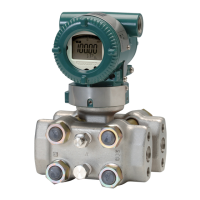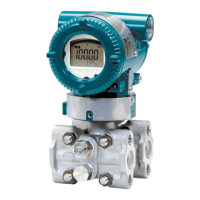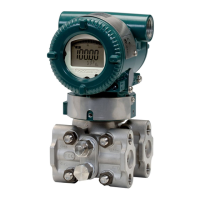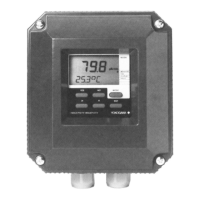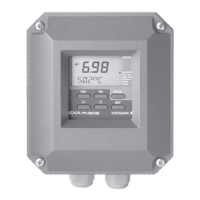<2. Handling Cautions>
11
IM 01C22A01-01E
Note 3. Operation
• WARNING:
AFTER DE-ENERGIZING, DELAY 10 MINUTES
BEFORE OPENING.
• WARNING:
WHEN AMBIENT TEMPERATURE ≥ 70°C,
USE THE HEAT-RESISTING CABLES ≥ 90°C.
• Take care not to generate mechanical sparking when
accessing to the instrument and peripheral devices in
a hazardous location.
Note 4. Maintenance and Repair
• The instrument modifi cation or parts replacement by
other than authorized representative of Yokogawa
Electric Corporation is prohibited and will void IECEx
Certifi cation.
2.4.4 CENELEC ATEX (KEMA)
Certifi cation
(1) Technical Data
a. CENELEC ATEX (KEMA) Intrinsically Safe
Type
Caution for CENELEC ATEX (KEMA) Intrinsically safe
type.
Note 1. Model EJA Series differential, gauge, and
absolute pressure transmitters with optional
code /KS2 for potentially explosive atmospheres:
• No. KEMA 02ATEX1030 X
• Applicable Standard: EN50014:1997, EN50020:1994,
EN50284:1999
• Type of Protection and Marking code: EEx ia IIC T4
• Temperature Class: T4
• Enclosure: IP67
• Process Temperature: 120°C max.
• Ambient Temperature: –40 to 60°C
Note 2. Electrical Data
• In type of explosion protection intrinsic safety EEx ia
IIC only for connection to a certifi ed intrinsically safe
circuit with following maximum values:
Ui = 30 V
Ii = 165 mA
Pi = 0.9 W
Effective internal capacitance; Ci = 22.5 nF
Effective internal inductance; Li = 730 μH
Note 3. Installation
• All wiring shall comply with local installation
requirements. (Refer to the installation diagram)
Note 4. Maintenance and Repair
• The instrument modifi cation or parts replacement by
other than authorized representative of Yokogawa
Electric Corporation is prohibited and will void KEMA
Intrinsically safe Certifi cation.
Note 5. Special Conditions for Safe Use
• In the case where the enclosure of the Pressure
Transmitter is made of aluminium, if it is mounted in
an area where the use of category 1 G apparatus is
required, it must be installed such, that, even in the
event of rare incidents, ignition sources due to impact
and friction sparks are excluded.
Transmitter
Supply
Safety Barrier
*1
Non-hazardous Location
[Installation Diagram]
Hazardous Location
+
–
+
–
F0209.ai
*1: In any safety barriers used the output current must be
limited by a resistor “R” such that Imaxout-Uz/R.
b. CENELEC ATEX (KEMA) Flameproof Type
Caution for CENELEC ATEX (KEMA) fl ameproof
type.
Note 1. Model EJA Series differential, gauge, and
absolute pressure transmitters with optional
code /KF2 for potentially explosive atmospheres:
• No. KEMA 02ATEX2148
• Applicable Standard: EN50014:1997, EN50018:2000
• Type of Protection and Marking Code:
EEx d IIC T6···T4
• Temperature Class: T6, T5, and T4
• Enclosure: IP67
• Maximum Process Temperature: 85°C (T6),
100°C (T5), and 120°C (T4)
• Ambient Temperature: T4 and T6; –40 to 75°C,
T5; –40 to 80°C
Note 2. Electrical Data
• Supply voltage: 42 V dc max.
• Output signal: 4 to 20 mA
Note 3. Installation
• All wiring shall comply with local installation
requirement.
• The cable entry devices shall be of a certifi ed
fl ameproof type, suitable for the conditions of use.
Note 4. Operation
• Keep the “CAUTION” label to the transmitter.
CAUTION: AFTER DE-ENERGIZING, DELAY 10
MINUTES BEFORE OPENING.
WHEN THE AMBIENT TEMP.70°C, USE HEAT-
RESISTING CABLES90°C.
• Take care not to generate mechanical sparking when
accessing to the instrument and peripheral devices in
a hazardous location.
Handling Cautions
2
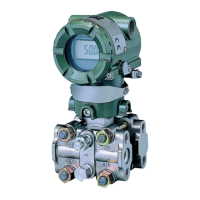
